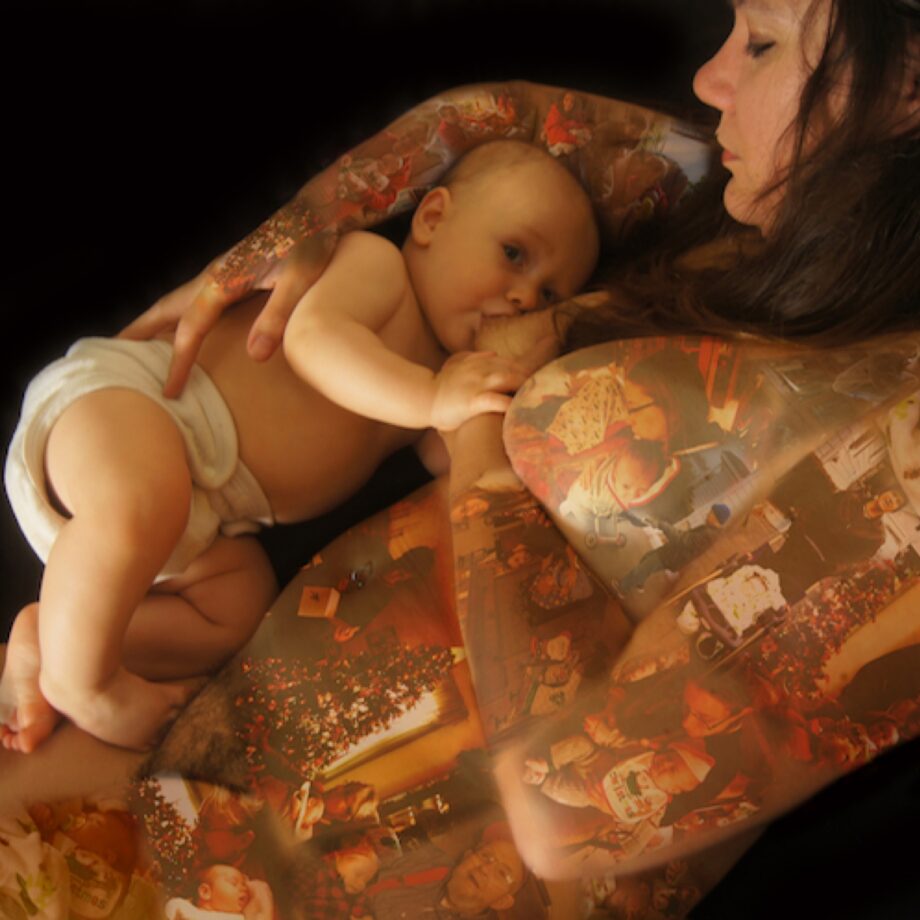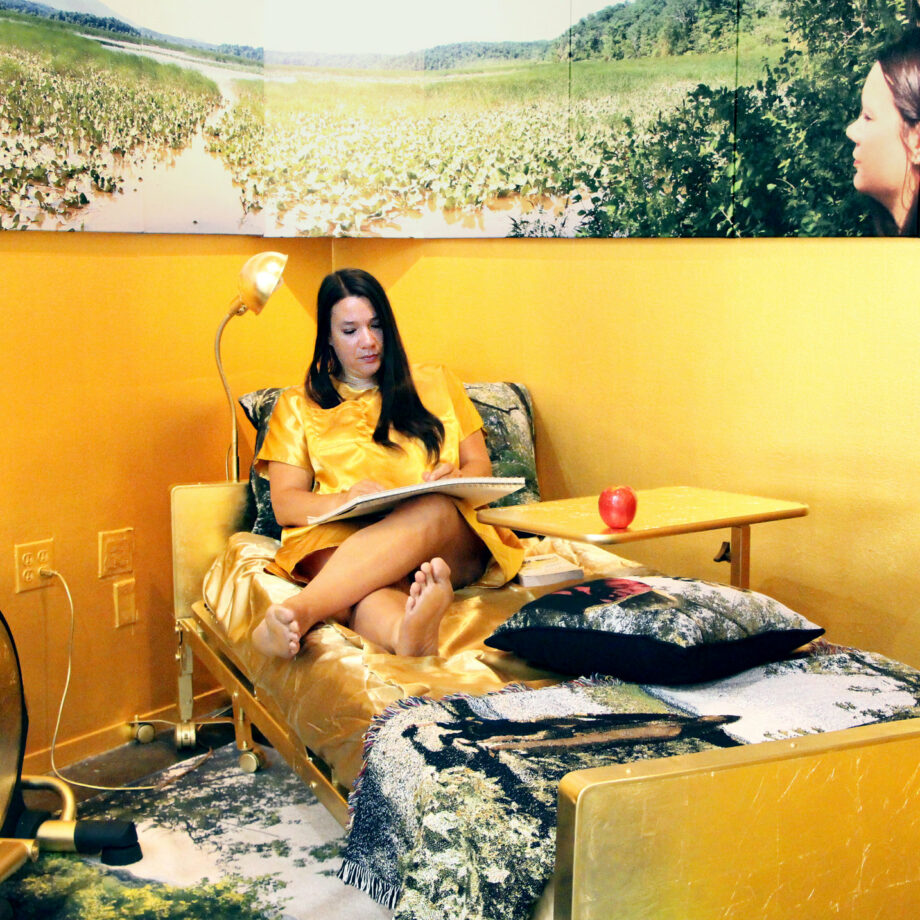
New York- Twelve years have passed since Marni Kotak gave birth in a Brooklyn gallery in the name of performance art.
In 2011, Marni Kotak set up a birthing room at Microscope Gallery with a blow-up pool, her grandmother’s bed, an old rocking chair and other personalised accessories to resemble a nursery. She mentally and physically prepared for months in the space while visitors could visit anytime. The idea was that anyone could walk into a live birth at any moment.
When the day finally came, Kotak gave birth to “Baby X”, a.k.a “Ajax”, accompanied by family, friends, and a handful of strangers. Kotak explains that she had met all of these strangers beforehand and that they had turned out to be quite helpful, “they went out and got me Chinese food. Somebody even went and got a bowl for the placenta because the one that I had wasn’t the right size,” says Kotak.
For centuries, art has utilised the image of mothers or mothers-to-be as a symbol of fertility. Maternity has been represented in art since the beginning of time, but never in a way that resonated with actual mothers. It’s taken an army of contemporary artists like Marni Kotak, Catherine Opie and Mary Kelly to dismantle these preconceived artistic notions.
Kotak relieves us of the falsehood that motherhood is one-dimensional. Motherhood is not a stagnant oil painting of a round woman in a field of overgrown grass or a snapshot of mother and child smiling, holding hands. Instead, motherhood is dynamic, messy, loud and sometimes requires wearing an adult diaper. Kotak shows this imperfect playfulness in subsequent video pieces, Raising Baby X: The First Year, Raising Baby X: Five Years and Raising Baby X: Years 6-10.
These videos sometimes run up to 10 hours long and actively reveal authentic moments shared between mother and child in a way that parallels a home video. Shortly after Ajax was born, Marni was hospitalised for postpartum complications. It was then that she had the idea to document Ajax’s childhood from his perspective, “when I got out [of the hospital], I immediately went to B&H and bought one of those little spy cameras. I just decided that I wanted the experience of ‘Raising Baby X’ to be filmed from his point of view.”
This decision made Marni’s work even more special. While most kids who’ve grown up in the past two decades have had their childhoods documented via camera, iPhone, TikTok or whatnot, very few can rewatch these moments from their own point of view.
Rarely does art offer this kind of experiential assemblage of motherhood that Kotak’s work embodies. Moreover, the realness of Kotak’s work allows mothers to see themselves represented in a broader context that’s been so commonly misinterpreted by media, art history, political agendas, and consumerist-driven content.
When I spoke with Kotak, we discussed this lack of representation concerning the postpartum experience. A few of her pieces explore this phenomenon, including Mad Meds, a durational installation and
performance that invites the public to watch as she withdraws from her doctor-prescribed medications for postpartum depression.
These realities are often discarded from the narrative of motherhood because they’re not the “ideal” we’ve been conditioned to expect. Kotak aims to honestly document her life while creating connections with others who have shared lived experiences. She even posted on NYFA, “I was looking for other women who had experiences with mental illness and wanted to be a part of my project.” She then
interviewed anyone who responded to her post and compiled the content into a video piece titled Mad Ms. Video Project.

While these images are available online, many videos are not in the public domain. It’s important to note that while Kotak’s work is fully devoted to documenting her life, it’s not content for mass consumption. As the inherent nature of some art is to be sold or distributed, these performance pieces take aim at the current depiction of the female body in art as something to be consumed.
“I’m always dealing with the issue of how to be real in a society that values products over people,” says Kotak. She also described her experience with child leave whilst working as a high-school teacher, “you get six weeks, which is just the amount of time it takes for the woman to stop bleeding. Then you’re expected to go back to work”.
These regulations, most likely conceived (pun intended) by men, have unfortunately shaped our understanding of motherhood as a byproduct of a patriarchal society. Kotak’s work is vital in combatting our current understanding of what motherhood requires from the mothers themselves and society at large.
In 2022, Marni Kotak and Ajax Kotak Bell collaborated on their latest installation and performance piece, Seriously Kidding Around, where they inhabited Microscope Gallery and went about their everyday lives. During this installation, they each received 10-foot tall trophies, “mine was for raising him for ten years, and his was for growing up for ten years.” When asked how Ajax felt about his birth being documented, Kotak notes that “he’s very proud of it, and he tells his friends and even strangers. There was one time when he was like, ‘This kid doesn’t believe me that I was born in an art gallery. You have to tell him!’.” He’s now twelve and has a GoPro. Accordingly, he has the agency to decide when to film and document his and their lives. Kotak explains that this series will always be a collaboration, much like motherhood.
Words by Gwyneth Giller





